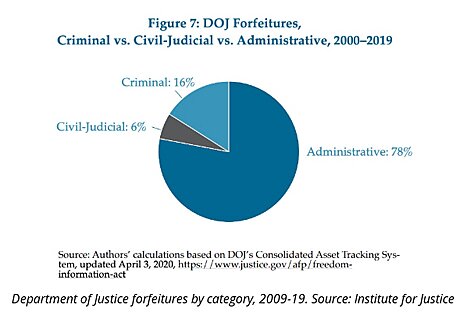What’s most interesting for the present conversation, however, is where the DOJ argued for increasing its ability to seize cryptocurrency.
For example, the report states that “it is critical that the United States have the authority to forfeit the proceeds of cryptocurrency fraud and manipulation as a means of deterring such activity and divesting violators of their ill-gotten gains.” Therefore, the DOJ recommends expanding its authority over criminal, civil, and administrative forfeiture.
The DOJ has claimed these updates are necessary because the department’s experience with cryptocurrency-related cases has “revealed limits on the forfeiture tools used to deprive wrongdoers of ill-gotten gains and, in certain cases, restore funds to victims.”
Yet this argument is difficult to understand considering how much and how often the government has been able to seize cryptocurrency over the years. In fact, the report itself mentions such cases. Between 2014 and 2022, the FBI seized around $427 million in cryptocurrency. The IRS seized another $3.8 billion between 2018–21.
With more than $4 billion on hand, the DOJ’s argument that the U.S. government is struggling to seize cryptocurrency is just not as apparent as the report’s recommendations make it out to be.
Still, the IRS’s broker proposal puts the DOJ’s report into a new light given the vast surveillance that the proposal would likely create — vast surveillance that could be used to start confiscating cryptocurrency at an even greater rate.
The problem is what’s referred to as administrative forfeiture. As Nick Sibilla explained in Forbes when the report first came out, “Under ‘administrative’ or ‘nonjudicial’ forfeiture, the seizing agency — not a judge — decides whether a property should be forfeited.” In other words, agencies do not need to prove to a judge that a crime was committed in order to seize the property.
The DOJ commended this process for promoting an “efficient allocation of government resources” while discouraging “undue burdens on the federal judicial system.” In fact, this process seems to be the DOJ’s preferred practice given that administrative forfeitures made up 78 percent of its forfeitures between 2000 and 2019.

